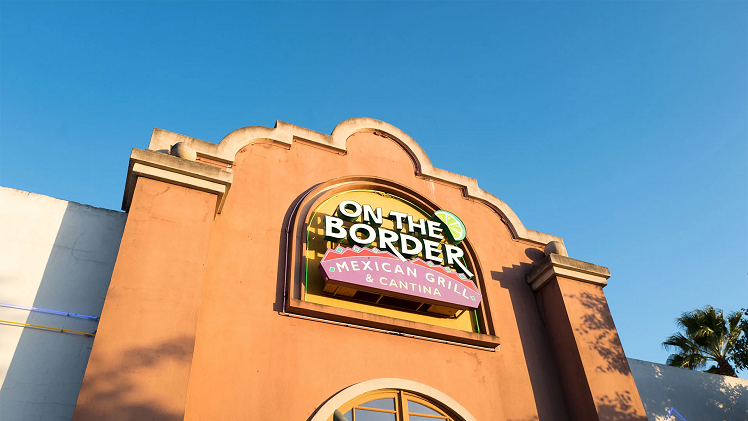Mexican Chain Closes 77 Locations | Full Breakdown & Market Insight

“Mexican chain closes 77 locations” is more than just a headline. It signals broader issues affecting the restaurant industry, from financial mismanagement to changing customer habits. Understanding why this happened helps put the entire foodservice economy into context. In this comprehensive guide, we’ll explore everything you need to know about Mexican Chain Closes 77 Locations.
Mexican Chain Closes 77 Locations: Everything You Need to Know
In a surprising development that has rippled across the foodservice industry, a prominent Mexican restaurant chain has officially announced the closure of 77 of its locations across the United States. This abrupt decision has not only stunned customers but also raised significant concerns about the state of casual dining chains in 2025.
In this in-depth article, we explore the reasons behind the closure, analyze the business consequences, delve into industry-wide implications, and present a roadmap for what may lie ahead.
Background of the Mexican Chain
The chain, which started in the early 2000s, quickly grew in popularity due to its unique blend of Tex-Mex cuisine, affordable pricing, and festive ambiance. By 2023, it had expanded to over 300 locations across the U.S., with a strong presence in California, Texas, and Florida.
Official Announcement Overview
On July 15, 2025, the company released a statement confirming the closure of 77 underperforming stores. The move was described as a “strategic realignment” to focus on profitability, streamline operations, and adapt to evolving consumer preferences.
States Affected by Closures
Here’s a breakdown of closures by state:
| State | Locations Closed |
|---|---|
| California | 15 |
| Texas | 12 |
| Florida | 8 |
| Arizona | 6 |
| Illinois | 5 |
| Nevada | 5 |
| New York | 4 |
| Georgia | 3 |
| Colorado | 3 |
| Others (combined) | 16 |
Declining foot traffic, increasing labor costs, and shrinking profit margins contributed heavily. According to financial analysts, Q2 2025 saw a 14% drop in same-store sales compared to the previous year.
COVID-19’s Lingering Impact
Although the pandemic officially ended years ago, its effects persist. Many dining habits shifted permanently to delivery and pickup, and dine-in traffic never fully recovered for many chains, including this one.
Rise of Fast-Casual Competition
Chains like Chipotle, Moe’s Southwest Grill, and Qdoba have been innovating rapidly. They offer cleaner menus, faster service, and better tech integration. The now-shrinking chain failed to keep pace.
Consumer Behavior Shifts
Modern consumers demand:
Healthier options
Transparent sourcing
Tech-driven ordering
Customization
This Mexican chain remained stuck in its early-2000s identity, alienating Gen Z and millennials.
Impact on Employees
An estimated 2,500 employees have been affected. Many have voiced frustration over lack of warning and severance. Some locations had barely completed recent renovations, adding salt to the wound.
Reactions from the Public
Customers are reacting strongly on social media. Hashtags like #SaveMexChain and #BringBackBurritos trended briefly. Some loyal patrons are even launching online petitions.
Competitor Advantage: Who’s Benefiting?
Chains like Chipotle, Del Taco, and even Taco Bell are swooping in to fill the gap. Local taquerias are also experiencing a surge in business in areas where closures occurred.
Franchise vs Corporate-Owned Store Closures
Of the 77 closures, 55 were corporate-owned while 22 were franchised. Franchisees have expressed anger over short notice and inadequate corporate support.
Statements from Industry Experts
Experts say this move could be the tip of the iceberg for mid-tier casual dining. Analysts from IBISWorld note that a “mass extinction” of dated chain models may be on the horizon.
Timeline of Events
March 2025: Internal restructuring begins
May 2025: Store audits conducted
June 2025: Lease negotiations fail
July 15, 2025: 77 locations closed
August 2025: Reinvestment plan in motion
Supply Chain & Operational Costs
Rising food and packaging costs — especially beef, tortillas, and avocados — made it hard to maintain margins. Suppliers also complained of late payments.
Online Ordering & Tech Deficit
The chain lacked mobile apps, online loyalty programs, and modern POS systems — a major oversight in a post-COVID world.
Rebranding or Permanent Exit?
Executives have hinted at a possible rebrand and relaunch under a new identity. However, some believe this is a disguised exit strategy.
Marketing Failures and Brand Fatigue
Marketing campaigns felt stale and outdated. “Fiesta Everyday” slogans failed to connect with today’s values around health, sustainability, and convenience.
Social Media Buzz
Trending hashtags:
#MexicanChainFail
#GoodbyeNachos
#BurritoGate
Influencers and former employees are sharing stories, some supportive and some damning.
The Role of Inflation
With inflation pushing menu prices up, many customers simply stopped dining out. A basic combo meal crossed $15 in several locations — too steep for budget-conscious diners.
Rent and Lease Conflicts
Several store closures were reportedly due to unresolved lease renegotiations. Property owners were unwilling to offer pandemic-style rent relief.
Menu Complexity vs Simplification
Over the years, the menu ballooned to over 70 items. This slowed down service and created inconsistencies, unlike competitors who offer streamlined, optimized menus.
Local vs National Impact
In cities where locations closed, the economic impact includes:
Loss of jobs
Drop in foot traffic to malls and shopping centers
Tax revenue dips for municipalities
Legal and Union Implications
Several former employees are filing lawsuits for abrupt terminations, violation of WARN Act regulations, and unpaid benefits.
Investors and Stock Market Reaction
If publicly traded, the company’s stock dropped 9% after the announcement. Private investors are also demanding faster ROI or partial asset liquidation.
Long-Term Recovery Plans
Remaining stores will undergo:
Digital upgrades
New marketing approach
Healthier menu changes
Improved staff training
CEO and Leadership Team’s Response
The CEO acknowledged “missteps in modernization” and promised a “leaner, more focused return.” Critics, however, call for a complete leadership overhaul.
(FAQs) Mexican Chain Closes 77 Locations
Q1: Why did the Mexican chain close 77 locations?
Due to financial struggles, rising costs, outdated operations, and falling customer engagement.
Q2: Are all stores closing?
No, only 77 out of 300+ locations are closing. The rest will remain open, pending performance reviews.
Q3: Will employees receive severance?
This varies by state and contract. Some employees are seeking legal help over unpaid wages.
Q4: Which states were most affected?
California, Texas, and Florida had the most closures.
Q5: Is the chain rebranding?
Leadership hinted at a rebranding effort, but no official announcement has been made.
Q6: How does this affect the fast-food industry?
It opens up market share for competitors and underscores the importance of modernization.
Conclusion of Mexican chain closes 77 locations
The news that a popular Mexican chain closes 77 locations is a wake-up call. It highlights the urgent need for innovation, adaptability, and customer-first strategies in the restaurant world.


